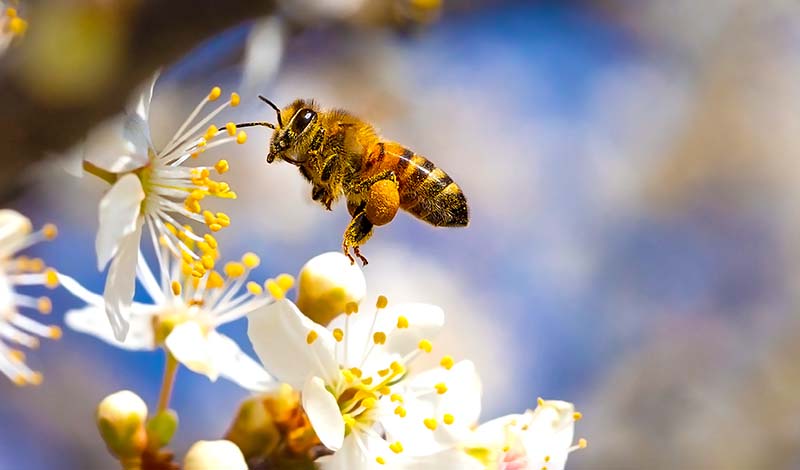
2-minute read
In celebration of World Bee Day, we’re going to look at one of the unexpected ways the planet’s hardest working pollinators go about the business of helping to keep us stocked in essential fruit, flowers, and veg.
Capable of visiting up to 1,000 flowers a day in their quest for pollen, these brainy insects use a variety of sensory capabilities to detect color, pattern, texture, and fragrance to scope out prime floral real estate efficiently.
According to scientists at the University of Bristol, bees have one tool in their pollen-detecting arsenal that may come as a bit of a shock—an electrostatic field. We humans can’t see it or feel it, but honeybees and bumblebees can perceive a weak electric field around flowers, helping them to determine which plants are the best bets for providing floral rewards.
As a bee travels through the air, it accumulates a positive electric charge. When the positively charged pollinator zeroes in on a negatively charged flower, an electric field is created that helps to dislodge and transfer pollen from flower to bee and from bee to flower.
How bees interpret and use information gathered from the floral e-field is species-dependent. Researchers believe that bumblebees perceive the strength of the force of the e-field through sensory hairs on their bodies that communicate by way of their central nervous systems which flowers will provide the best pollen pay-off. Honeybees detect e-field locations through their antennae and carry pollen source information back to the hive, disseminating news of first-rate foraging locations via an intricate waggle dance.
Given that 75 percent of food crops rely on pollinators, we are glad to learn that everybody’s favorite buzzers are equipped with all the necessary capabilities to ensure they can get the job done. Another amazing way that nature’s adaptations provide big benefits.
If you would like to learn how you can help keep these industrious e-field detectives in top form, check in with the Bee Conservancy.

ICYMI Nature News
Pollinating Tree Frogs
Uh oh, look out bumblebees! Scientists believe they may have discovered a new species of pollinator to add to the list of planetary helpers—a tiny, pollen and nectar-feasting Brazilian tree frog.
Touch-Tasting Octopuses
According to scientists at the University of Texas, octopuses use sensory mechanisms in their tentacles to taste potential food sources. So, no long sleeves for these multi-limbed marvels, then?
Extinct Animals Re-Imagined
To help draw attention to the extinction crisis, author Lucas Zellers and the Center for Biological Diversity have created a role-playing game manual inspired by 70 extinct animal species. The book is due later this year, but you can get a preview here.
Video Chatting Parrots
The University of Glasgow researchers have discovered that isolated pet parrots taught to video chat with distant bird pals gained similar social benefits to living in a flock. Polly want a video call?
More Fascinating Bird Behavior
If you think video-chatting parrots are awe-inspiring, check out what these clever winged creatures get up to in the wild as captured by the 2022 Audubon Photo Award winners.
FWP Carbon Capture Report
Happy one-year Tree-Nation tree-versary FWP readers! From April 2022 through April 2023, we are glad to report that the trees we’ve planted across 12 projects bring our carbon capture total to 3459 tons. That’s the equivalent of 8,000 barrels of oil consumed, 389,204 gallons of gasoline consumed, or 3,874,454 pounds of coal burned.



































































